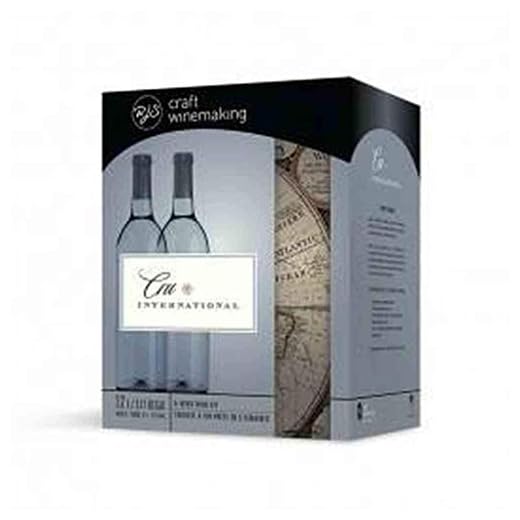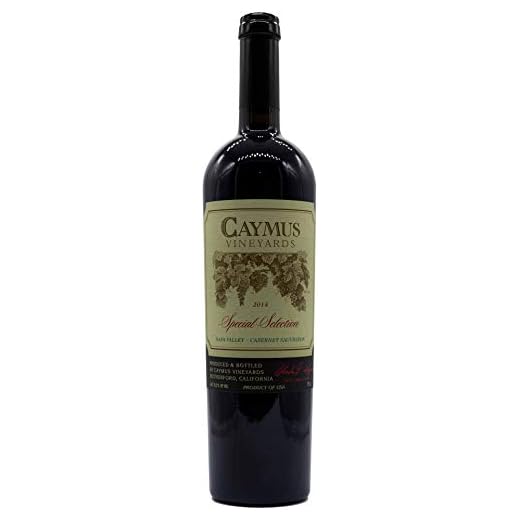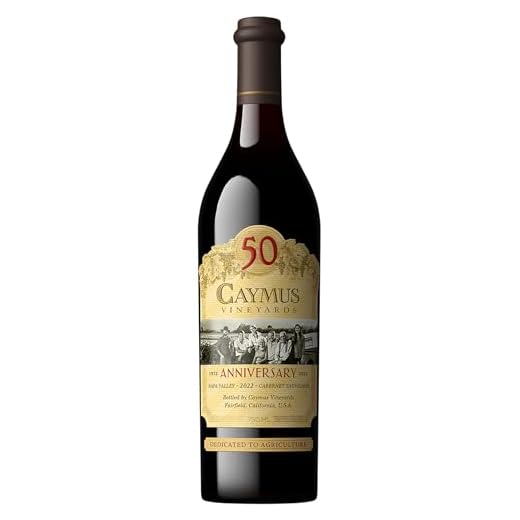



To pinpoint the total number of varieties in the category of dark vintages, one must consider a staggering estimate of over 10,000 distinct types globally. This extensive range spans numerous regions, each contributing unique characteristics influenced by climate, soil, and vinification techniques.
In regions like Bordeaux, Burgundy, and Tuscany, the diversity of varietals is particularly pronounced. For example, Bordeaux boasts iconic grapes such as Cabernet Sauvignon and Merlot, while Burgundy is renowned for its Pinot Noir. Each of these varietals brings a distinct profile, showcasing the artistry of the winemaker and the terroir.
For enthusiasts eager to explore this vast selection, I recommend starting with well-structured bottles that exhibit a balance of fruit, acidity, and tannins. Seek out wines from lesser-known regions, as they often provide remarkable quality at accessible price points. Exploring blends is another rewarding avenue; they can reveal the complexity achieved through the harmonious integration of various varietals.
Whether you’re tasting a robust Cabernet or a smooth Pinot, the world of dark vintages offers an incredible array of experiences waiting to be discovered. Embrace the journey of tasting and learning, and let your palate guide you through this fascinating and rich landscape.
Quantifying Varieties of Dark Vintages
In the expansive universe of dark varietals, the total can reach hundreds. Each region and grape type contributes unique flavors and characteristics. For a focused exploration, here are key categories to consider:
- Traditional Varietals:
- Cabernet Sauvignon
- Merlot
- Pinot Noir
- Syrah/Shiraz
- Regional Specialties:
- Malbec from Argentina
- Tempranillo from Spain
- Barbera from Italy
- Grenache from the Rhône Valley
- Emerging Varietals:
- Tannat
- Petite Sirah
- Primitivo
- Corvina
Experimenting with blending can also create exciting new profiles. Notable blends include:
- Bordeaux Blend (Cabernet Sauvignon, Merlot, Cabernet Franc)
- Super Tuscan (Sangiovese with international varietals)
- Rhône Blend (Grenache, Syrah, Mourvèdre)
While the total count of dark varietals is vast, focusing on a few key types and blends can enhance your knowledge and appreciation. Savoring each glass leads to discovering personal favorites and hidden gems that might surprise you.
Understanding the Major Varieties of Deep-Hued Grapes
Cabernet Sauvignon stands out as a powerhouse, known for its full-bodied profile and pronounced tannins. It thrives in diverse climates, producing bold, complex flavors of blackcurrant and cedar. Pair this with grilled meats or hearty stews for an exceptional experience.
Merlot, often softer and fruitier, offers a plush texture with notes of plum and chocolate. This variety is versatile, complementing poultry dishes and pasta with red sauce seamlessly.
Pinot Noir showcases elegance and finesse, characterized by its lighter body and nuanced aromas of cherry and earth. This grape finds its best expression in cooler climates, making it a perfect match for salmon or duck.
Syrah, known as Shiraz in Australia, delivers a robust flavor profile with spicy and smoky undertones. It pairs beautifully with barbecue or rich, savory dishes, enhancing the overall dining experience.
Zinfandel, with its jammy fruit flavors and peppery finish, is a versatile option that can range from medium to full-bodied. Enjoy it with pizza or grilled sausages for a delightful pairing.
Each of these grape varieties contributes unique characteristics to the glass, inviting exploration and enjoyment. By understanding their profiles, you can enhance your culinary adventures and wine selections. Always consider the synergy between the dish and the beverage to elevate your dining journey.
Regional Differences in Red Wine Production
Exploring the nuances of wine production across various regions reveals distinct characteristics and flavor profiles, shaped by climate, soil, and local traditions. For example, the bold and fruit-forward varieties from California contrast sharply with the earthy and complex selections from Bordeaux.
Climate and Terroir Influence
Temperature variations and rainfall patterns dictate grape ripening, impacting sugar levels and acidity. In warmer climates like Australia, expect fuller-bodied selections with high alcohol content. Conversely, cooler regions like Oregon produce more restrained, elegant styles with bright acidity and nuanced flavors.
Traditional vs. Modern Techniques
Winemaking practices also differ significantly. Italian producers often employ ancient techniques, such as appassimento for Amarone, where grapes are dried before fermentation, enhancing concentration. In contrast, New World producers frequently utilize technological advancements to refine their processes, resulting in consistent and approachable offerings.
| Region | Key Characteristics | Notable Varieties |
|---|---|---|
| Bordeaux, France | Earthy, structured, age-worthy | Merlot, Cabernet Sauvignon |
| Napa Valley, USA | Rich, fruit-forward, high alcohol | Cabernet Sauvignon, Zinfandel |
| Tuscany, Italy | Rustic, herbal, balanced acidity | Sangiovese, Super Tuscan blends |
| Barossa Valley, Australia | Full-bodied, jammy, high tannins | Shiraz, Grenache |
| Oregon, USA | Elegant, bright, complex | Pinot Noir, Chardonnay |
Understanding these regional distinctions enables better pairing with food and enhances appreciation. Each bottle tells a story of its origin, making the exploration of global viticulture a rewarding experience.
Factors Influencing the Number of Types of Dark Vintages
Understanding the elements that shape the variety of dark vintages requires a focus on terroir, winemaking techniques, and consumer preferences. Terroir, the unique combination of soil, climate, and geography, significantly impacts the characteristics and styles of these beverages produced in different regions. For instance, a vineyard in Bordeaux may yield a different profile than one in California, leading to distinct varietal expressions.
Winemaking Techniques
The methods employed during vinification also contribute to the diversity of these beverages. Techniques such as oak aging, fermentation temperature control, and blending practices can create a multitude of flavor profiles and textures. Producers often experiment with various approaches, further expanding the range of styles available to enthusiasts.
Consumer Trends
Shifting consumer preferences play a critical role in the development of new varieties. As palates evolve, winemakers adapt by introducing innovative blends or focusing on lesser-known grapes. This responsiveness to market demands fosters an environment where unique and diverse options can flourish. For those looking to enjoy the great outdoors, consider pairing your favorite choice with a camping experience powered by the best solar generators for camping.
Identifying and Classifying Dark Varietals
Begin by examining the color and intensity of the liquid. A deeper hue often indicates a bolder flavor profile, while lighter shades may suggest a more delicate taste. Look for variations in color, which can range from ruby to garnet, and assess the clarity. A clear liquid typically signifies quality, while cloudiness might indicate faults.
Next, take a moment to swirl the glass, allowing aromas to develop. Inhale deeply to identify primary scents such as fruit, spice, or earthy notes. Familiarize yourself with common aromatic profiles: for instance, notes of blackberry and plum are often found in certain varietals, while others may present hints of pepper or tobacco.
Taste the liquid to evaluate its structure. Pay attention to the balance between acidity, tannins, and sweetness. High acidity can create a refreshing sensation, while robust tannins add depth and complexity. Recognizing these elements will aid in classifying the drink into categories such as full-bodied or light-bodied.
Consider the region of origin as well. Different areas produce distinct characteristics due to climate and soil conditions. For example, a wine from Napa Valley might showcase ripe fruit flavors, while a counterpart from Bordeaux could express earthier tones. Understanding these regional influences will enhance your classification skills.
Lastly, keep an eye on the vintage. Weather patterns during the growing season can significantly impact the flavor profile. A warmer year might yield riper fruit, while a cooler season can produce more nuanced flavors. This temporal aspect is crucial in distinguishing between similar varietals.
Trends in Red Wine Popularity and Diversity
Current statistics reveal a significant increase in interest for diverse varieties, particularly from emerging regions. Countries like Argentina and South Africa have gained attention for their exceptional Malbec and Pinotage, respectively. The shift towards organic and biodynamic production methods is also noteworthy, appealing to health-conscious consumers seeking sustainable options.
In recent years, there’s been a resurgence of old-world styles, particularly from Burgundy and Bordeaux. These classic regions are experiencing renewed appreciation, with younger consumers eager to explore traditional methods and terroirs. Meanwhile, innovative techniques in winemaking, such as carbonic maceration, are driving interest in lighter, fruit-forward profiles.
The rise of online wine sales and subscription services has democratized access to a wider array of selections. This trend encourages experimentation, allowing enthusiasts to explore lesser-known grapes and blends from various regions without the constraints of local availability.
Food pairing education remains a hot topic, influencing consumer choices. As culinary experiences become more integrated into wine enjoyment, varietals that complement specific cuisines are increasingly popular. This trend supports the exploration of diverse flavor profiles and reinforces the connection between food and beverage.
Social media platforms play a crucial role in shaping preferences, with influencers and sommeliers sharing their discoveries and recommendations. This digital engagement fosters community and encourages consumers to try new options, broadening their palates.
Ultimately, these developments reflect a dynamic shift in preferences, highlighting the importance of diversity and exploration in the wine sector. Staying informed and open-minded is key to navigating this vibrant landscape of options.
FAQ:
How many types of red wine are there?
Red wine can be categorized into numerous types based on grape variety, region, and winemaking techniques. Some of the most well-known types include Cabernet Sauvignon, Merlot, Pinot Noir, Syrah/Shiraz, Zinfandel, and Malbec. Each of these varieties has its own unique flavor profile and characteristics, influenced by the terroir where the grapes are grown. In addition to these main varieties, there are many lesser-known red wines from specific regions or made from unique blends, resulting in a vast array of options for wine enthusiasts to explore.
What factors influence the flavor of red wine?
The flavor of red wine is influenced by several key factors including the grape variety, the climate and soil conditions where the grapes are grown, and the winemaking process itself. Different grape varieties have distinct flavor profiles; for example, Cabernet Sauvignon is often bold and tannic, while Pinot Noir tends to be lighter and more delicate. The climate can affect the ripeness and acidity of the grapes, which in turn impacts the wine’s taste. Additionally, techniques such as fermentation temperature, aging in oak barrels, and blending can significantly alter the final flavor profile of the wine.
Are there any health benefits associated with drinking red wine?
Moderate consumption of red wine has been linked to several potential health benefits, primarily due to its high levels of antioxidants, including resveratrol. Some studies suggest that these antioxidants may contribute to heart health by improving cholesterol levels and reducing the risk of certain cardiovascular diseases. However, it is important to note that excessive alcohol consumption can have negative health effects. Therefore, moderation is key, and individuals should consult with a healthcare provider to understand the implications of alcohol consumption based on their personal health circumstances.
How do I choose a good red wine for a meal?
Choosing a good red wine to pair with a meal involves considering the flavors and weight of both the food and the wine. Generally, lighter reds like Pinot Noir complement poultry and seafood, while fuller-bodied wines like Cabernet Sauvignon pair well with red meats and hearty dishes. It’s also helpful to consider the sauce or seasoning of the dish; for example, a spicy dish might match well with a Zinfandel. Lastly, personal preference plays a significant role, so exploring different wines and finding what you enjoy is important in the pairing process.











